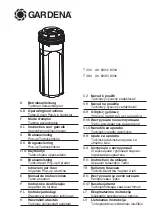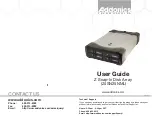
G E N E R A L I N F O R M A T I O N
page 1 – 3
WheatNet-IP
/ Aug 2011
General Information
Introduction
Congratulations on acquiring the Wheatstone WheatNet-IP system. This exciting
new technology allows you to build a networked audio system of I/O devices, control
surfaces, computers, and controllers, all without using a dedicated audio router. How
do we do this? By using a LAN (Local Area Network) itself to connect the various
devices together and distribute audio and logic data where needed.
Each WheatNet-IP device (we call them “BLADEs”) functions primarily as an
audio access point, where analog or digital audio signals are connected to this network.
Within the WheatNet-IP unit, the audio channels are converted to packets of data
that can travel over an Ethernet LAN. The Ethernet switches that compose the core
of the LAN directly control the distribution of packets and perform the “switching”
function of a traditional audio router. Once the audio packets have been forwarded
to the desired destination end point (typically a PC or another WheatNet-IP device),
they are reassembled into an audio signal and made available.
By converting audio into data packets, the traditional audio wiring infrastructure
of multipair cables, trunk lines, patch bays, and punchblocks is no longer needed.
In fact all the distribution cables you need may already be in place – in the form of
your LAN and its CAT-5e cables. You’ll only need to wire your source and destina-
tion devices to “BLADEs” to complete your system. Best of all, the dozens of audio
cables and hundreds of logic connections you used to need to connect up each audio
console have been replaced with a single CAT-5e cable to the control surface. What
could be easier?
A word about latency – a finite and not insignificant delay from when audio or
logic starts at the input of the system and when it appears at the output. Packet based
audio networks have a reputation of having significant latency issues due to the per
-
formance of the earliest implementations, some of which had tens and even hundreds
of milliseconds of latency. Each component of the system contributes to latency. On
the input side, the A/D convertors (or Sample Rate Convertors for digital inputs) take
a little time to do their work. Multiple samples of audio data must be accumulated and
formed into packets before they are placed on the network. Ethernet switches take
time to analyze the packets before they are sent on to their destinations, where they
are disassembled and formed into audio streams which finally can be converted by
D/A converters before the audio starts to play. All of this eats up a little bit of time at
each step along the way. The WheatNet-IP system has been designed from the out-
set to use Gigabit networks, among other things, to minimize latency. Total latency
from a BLADE’s input through an Ethernet switch to a different BLADE’s output
Содержание WheatNet-IP Blade3s
Страница 2: ...TECHNICAL MANUAL Wheatstone Corporation April 2009 AUDIO OVER IP NETWORK WheatNet IP ...
Страница 13: ...Quick Start 7 WheatNet IP Apr 2009 Figure 4 ...
Страница 224: ...A P P E N D I C E S page A 34 WheatNet IP Apr 2009 Appendix 5 Contents External Controllers A 35 ...
Страница 238: ...page A 48 WheatNet IP Mar 2014 A P P E N D I C E S Click Next Click Install ...
















































